New Cervélo R5 finally launches after a stellar season in the WorldTour
The bike that Roglic and Van Aert have ridden to some of 2021's most spectacular wins is officially unveiled
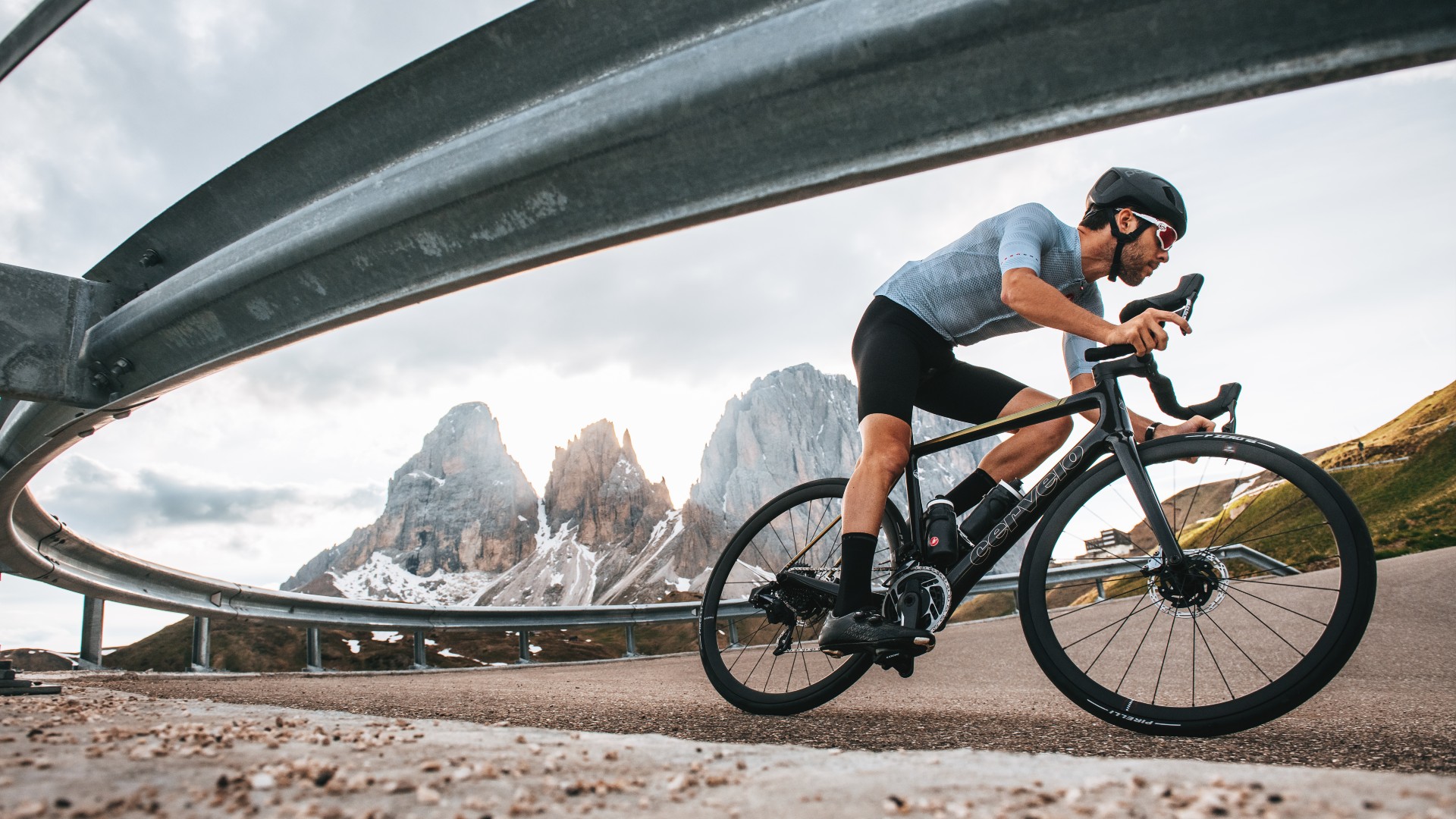

It’s rare that a bike is launched after it’s spent a whole season in the pro peloton and won Grand Tour stages, but that’s exactly what Cervélo has done with the new R5.
This is the bike Primoz Roglic has been riding since it was first spotted at Fleche Wallonne in April, and that Wout Van Aert and the rest of the Jumbo-Visma team have been riding from the Tour de France onwards alongside the Cervélo S5 aero bike. It’s the one Roglic held up in the air after winning his third Vuelta.
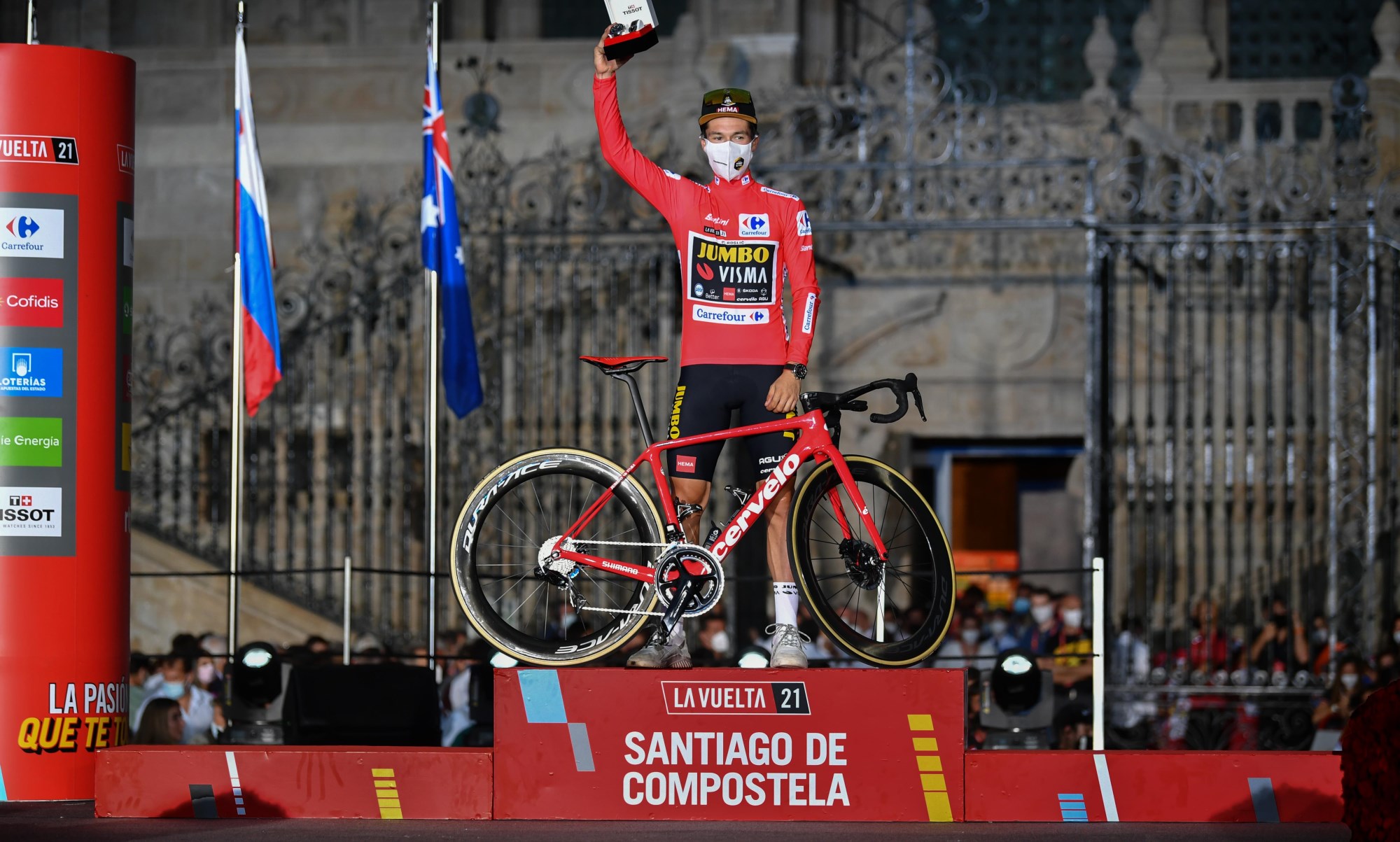
The new Cervélo R5 is still an undiluted climbing bike. Cervélo says it refuses to compromise by merging the aero bike with the lightweight bike, as other brands have done. It has one job - and that’s to get to the top fast, although the Canadian brand points out that it has always been a very adept descender too - necessary since a summit finish is rarely the only climb in a mountain stage.
According to Cervélo, the new R5 is faster in every direction, and you can read our first ride review of the Cervélo R5 here.
Cervélo R5: key differences
- 130g has been taken off the frame weight - a 16% reduction off previous one.
- Frame weight is 703g (size 56cm, painted)
- Seatpost is 20g lighter; bar and stem 12g lighter each
- Less stiff than before - in response to pro and consumer feedback
- Disc brake and electronic groupset compatible only
- Integrated cockpit compensates for inferior aerodynamics of smaller down tube
- Faster in wind tunnel overall thanks to the integrated cockpit and other small frame refinements (the ‘chin’ between the fork crown and down tube and the fastback seatstays)
- More tyre clearance - 34mm up from 28mm
- Frame more compact than before - 15mm extra standover (but no dropped seatstays)
- Exactly the same geometry as before and same six sizes, with same number of fork offsets across the sizes for handling consistency
- 15mm offset seatpost replaces 25mm offset for the larger sizes
- Comes in four builds (top two Shimano and top two SRAM) or frameset only
Less weight, more comfort
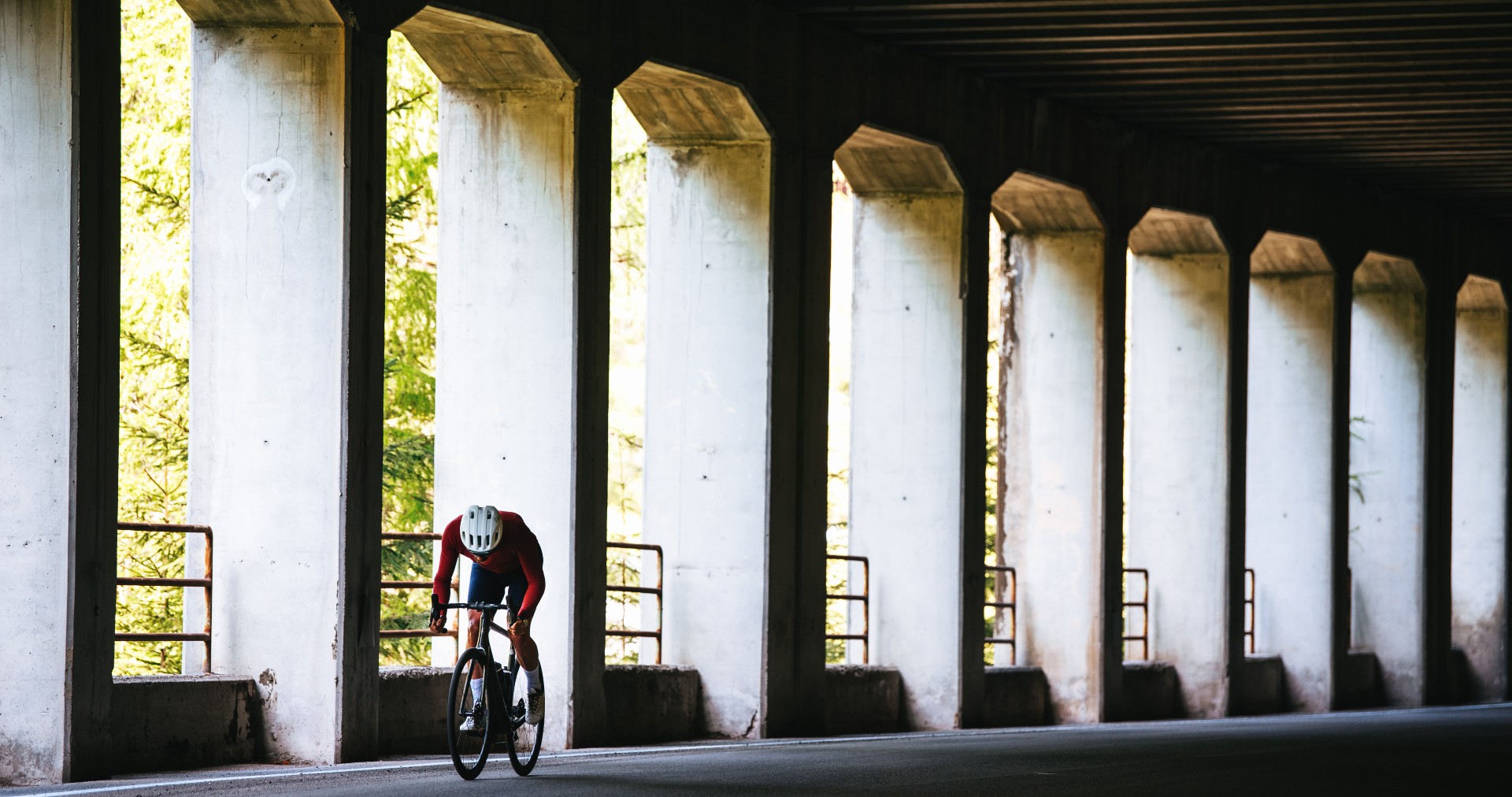
The fourth generation R5 is 130g lighter than the previous one, which equals a 16 percent reduction.
The new frame weighs a claimed 703g, in a painted size 56cm, and the new fork is 329g, bringing frame and fork down to just a whisker over the kilo mark.
Cervélo also took some weight out of the parts that are included in the frameset: the handlebar and stem are each 12g lighter, and the seatpost is 20g lighter, making it now much simpler to build a bike that hits the UCI minimum weight of 6.8kg.
While aerodynamics weren’t a focus with the R5, the way they would be with the S5 aero bike or the P5 time trial bike, bringing the cables and hoses inside the frame has reduced drag by 25g according to Cervélo.
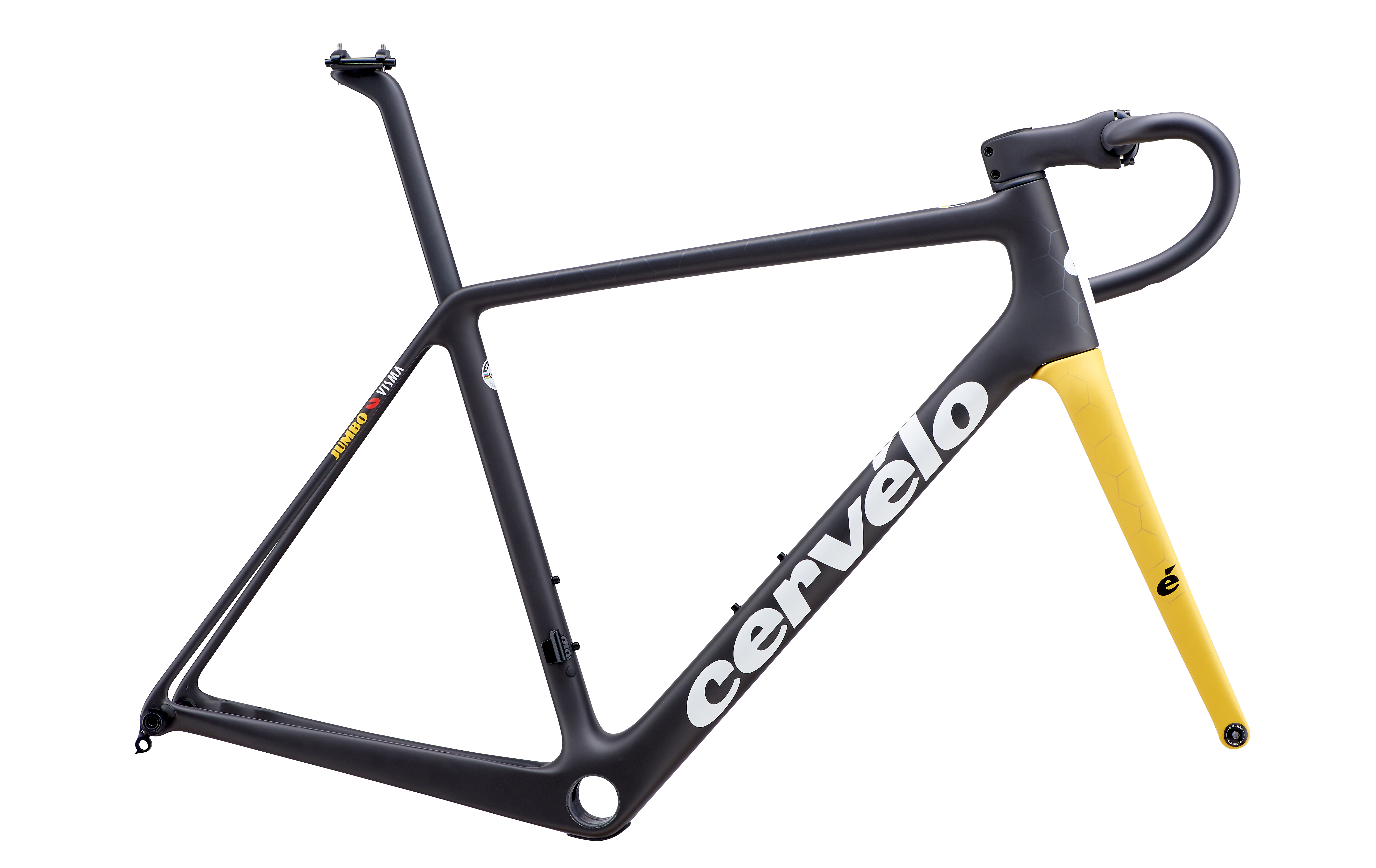
So far, claims for stiffness are conspicuous by the absence, and that’s because the new Cervélo R5 is actually less stiff than the previous version.
According to Cervélo, the goat-like climbing ability of the previous R5 came at the expense of a bit of jarring, especially at the front end. While that wasn’t a problem for most riders, Cervélo's WorldTour teams reported that the bikes got more uncomfortable as the weeks of a Grand Tour wore on.
Scott Roy, Cervélo's engineering manager explains: “The bike had been across three different teams and there was a consistent complaint about stiffness in the front end. So we wanted to as a number-one priority address that and make it more liveable.
“We had a consistent rider with Tom Dumoulin (he had previously ridden the R5 at Sunweb) who was quite vocal about the way the bike rode, how it handled, how it felt for him. So thankfully we followed him over to Jumbo-Visma and were able to get that feedback from development with him."
Cervélo says its engineers had previously found that a specific ratio between head tube and bottom bracket stiffness equalled the magic formula for ride quality, but they’d never applied it to the R5 since it was a climbing bike and they were pursuing all-out stiffness.
So they worked on different carbon layups, tested them and also sent them over to Jumbo-Visma and Dumoulin.
Cervélo also redesigned the fork in the same way as the frame - keeping lateral stiffness where it was but dialling back some longitudinal stiffness by tweaking chord length and layup.
Reducing frame stiffness was done by reducing the surface area of the tubes, Roy explains. The larger the cross section of the tube - and the 'Squoval Max' down tube of the outgoing R5 was huge - the more torsional stiffness it has. So with a combination of carbon layups and new tube shapes the R5’s ride quality was improved and its weight reduced without losing its climbing ability.
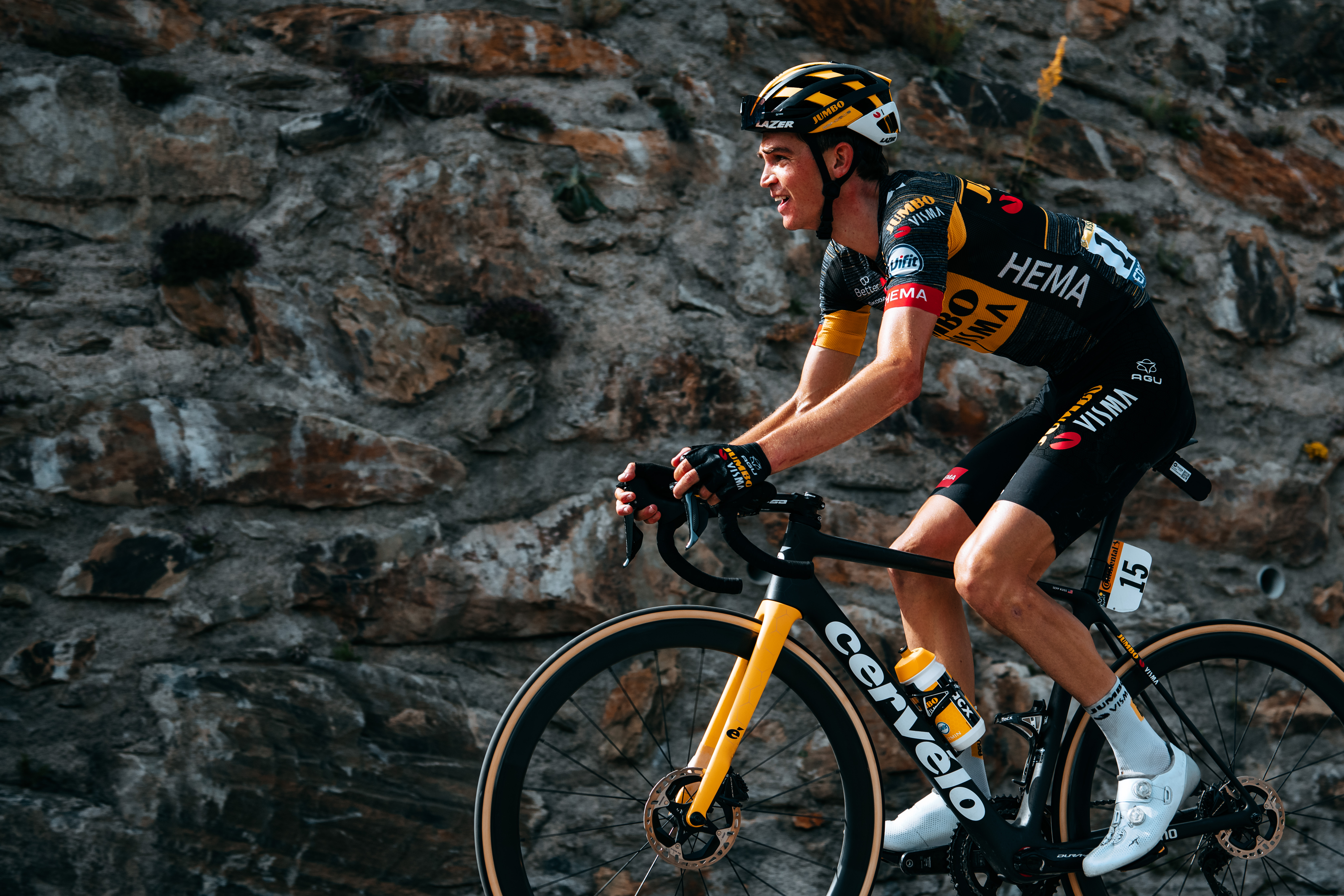
According to Cervélo, Dumoulin reported back that he could climb just as efficiently on the new bike, and confirmed that the added compliance would result in less fatigue and more effective recovery.
Roy continues: “The other thing that cropped up was even pro teams would really struggle, using a lot of mechanical witchcraft to get the bike consistently under 6.8kg for a size 56.
"So that was a catalyst for me, to really take a microscope to where we were with all the carbon components, to take out what we could without losing any of the characteristics.
"We went through a dozen different layup iterations with the frame to get where we wanted to be. We’re pretty happy with 700g for the frame.
“That was the biggest thing - keeping it handling the same in descents and climbing the same. When you fiddle with frame weight you can end up with a tinny-feeling bike - so you need to follow a bell curve relative to frame weight to keep the ride quality.”
Roy says Cervélo was “not conservative” with the weight of the R5, “but any lower and you’re into a whole plethora of issues with keeping the same feeling of how it handles and climbs.”
Improved aerodynamics
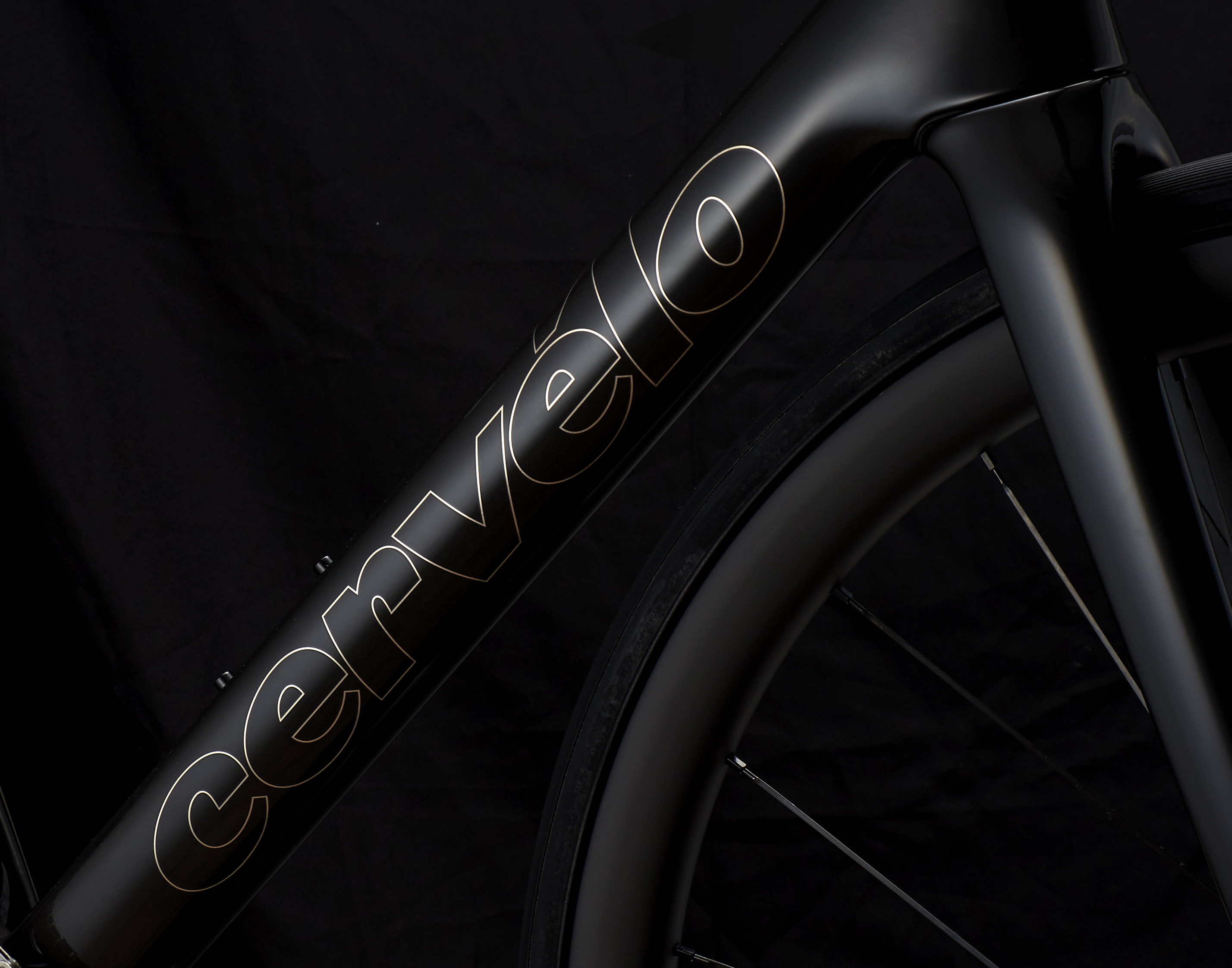
With the primary objectives of improving ride comfort and reducing frame weight met, Cervélo focused on refinement, such as bringing the cables inside the head tube, redesigning the bar, stem, and seatpost in an attempt to make the package even faster as well as increasing tyre clearance. The new R5 has space for a 34mm tyre compared to 28mm for the previous one.
Roy explains the decision behind the integrated cockpit, which now routes cables inside the head tube: “With this bike it was important from a performance standpoint to integrate the front end. With the previous-generation bike we really wanted to maximise stiffness with the big down tube but with the new bike, by reducing the tube shapes slightly you lose some of the characteristics of the leading edge. So we had to offset that, not only by taking the cables out of the air but by integrating the fork and the frame better.”
Roy refers to what he calls a “chin section” - almost a fairing behind the fork crown that’s designed to clean the airflow up from the fork and head tube area.
Cervélo says the new R5 is faster in the wind tunnel than the old R5: “Not by a huge amount but it’s faster,” says Roy.
With more drivetrains going wireless - now including the new Shimano Dura-Ace and Ultegra Di2 - Cervélo says it has been possible to simplify frame design: since the new R5 is for electronic groupsets only, there aren’t so many holes in the frame, which Cervélo says is more efficient for manufacturing and also means an integrated front end doesn’t present such a problem - whether perceived or real - for home mechanics.
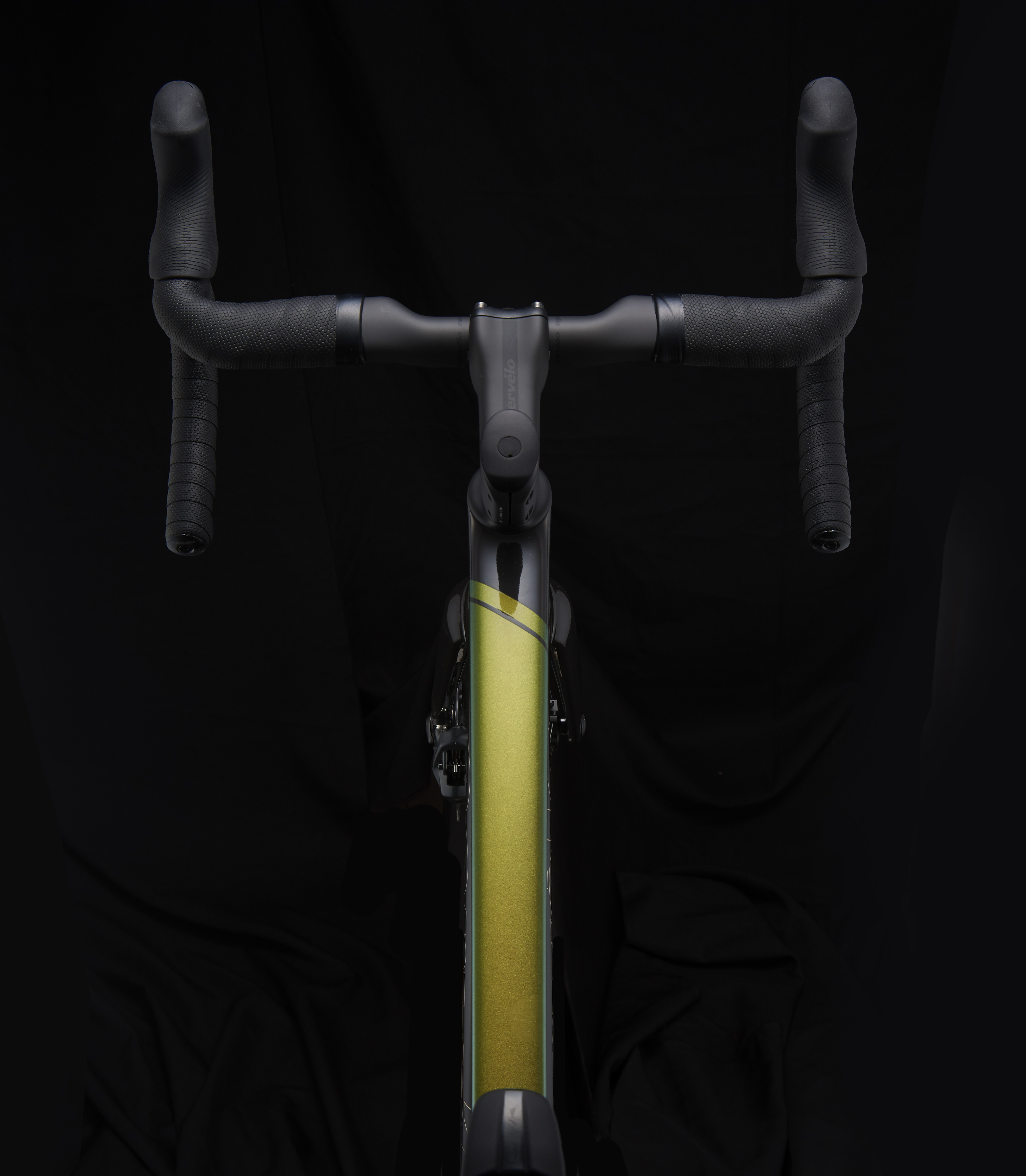
Cervélo says it has already proven integrated routing systems with other platforms such as the Aspero-5 and so it was an obvious next step to carry that over to the new R5.
Deflecting possible criticism of the system from consumers, Cervélo director of product management Maria Benson says: “There’s an expectation from the market to have a clean, integrated front end. But we’re using a stem that just looks like a normal stem and the cables just run directly through that stem.
“The initial assembly with this is quite straightforward. It has a couple of proprietary parts like the split spacers but it’s simple.”
The bar uses a standard 31.8mm diameter at the clamp, making it compatible with standard computer mounts and lights.
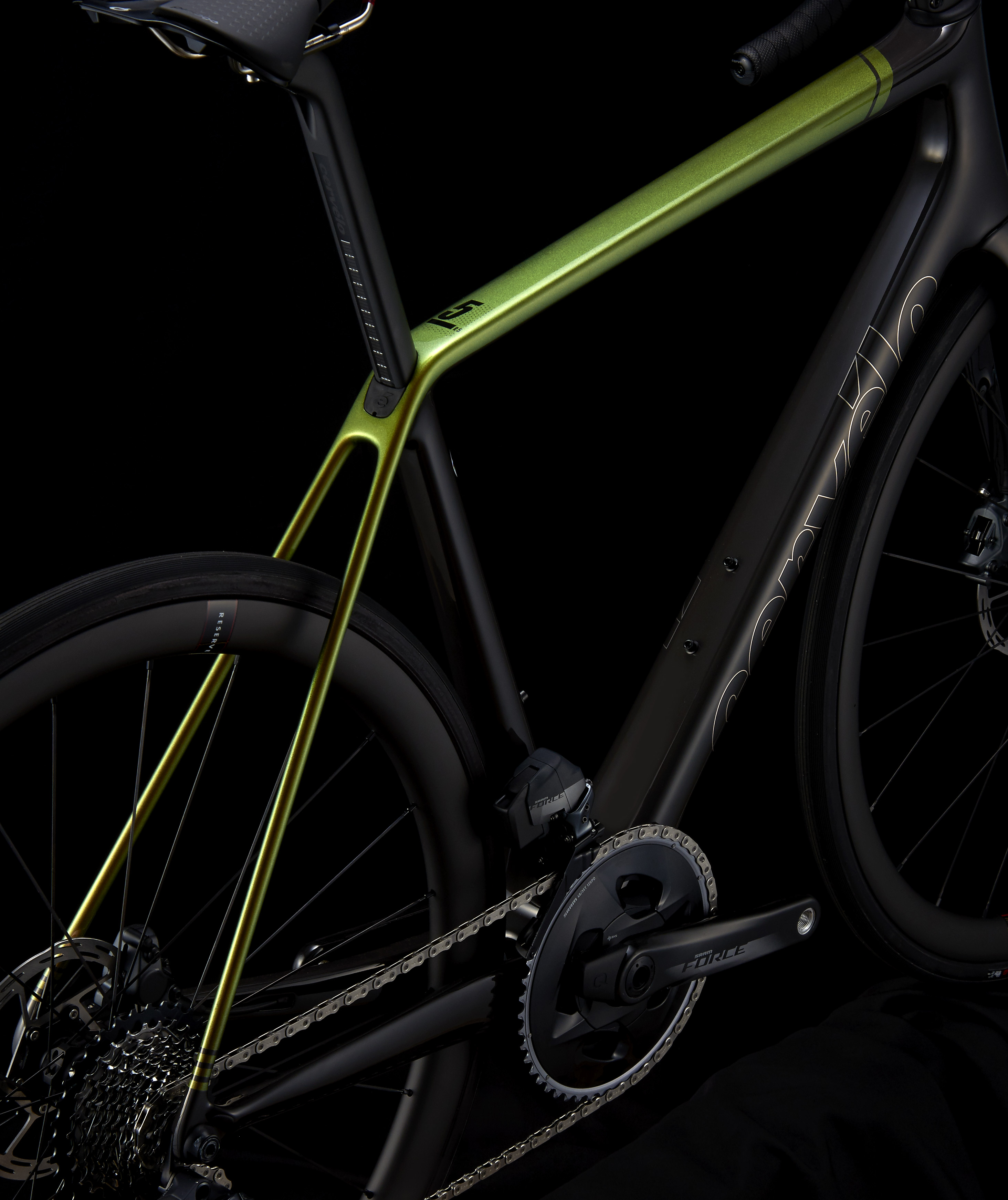
At the rear, a redesigned seatpost clamp area has also cleaned up the top tube/seat tube area with an inboard wedge that creates a ‘fastback’ design intended to save a couple of watts, and the entire juncture has been dropped by 15mm, reducing standover height and making the frame more compact than before.
“Compact frames are generally a little lighter than non-compact,” explains Roy, “but dropping that junction also increases the leverage of the seatpost, giving a little more compliance.”
No change for geometry and size range
The geometry of the new R5 stays exactly the same. Like Specialized with the Tarmac, Cervélo has settled on angles that work and has decided to leave them alone. Stack and reach are the same across the six sizes, which range from 48cm to 61cm, as are head tube and seat tube angles and chainstay length, and there are the same three fork offsets across the sizes to keep handling consistent.
The fork trail was adjusted by half a millimetre to compensate for the larger tyre, but Roy says that’s the only change.
Although the geometry stays the same, Cervélo has tweaked seatpost setback, swapping the 25mm offset seatpost for a 15mm version in the larger sizes, which it says is to allow for the more forward positions that bike fits are leaning towards.
Zero offset, 15mm and 25mm R5 seatposts will all be available aftermarket.
New Reserve wheelset for all four complete builds
All four builds - two Shimano and two SRAM (see below) feature new wheels from Reserve, which is not a house brand but rather a collaboration between Cervélo and Santa Cruz, who are both owned by the Dutch Pon group. The outgoing R5 was equipped with Reserve 50mm wheels with DT350 hubs; the new bike gets a new Reserve wheelset with differential-profiled rims which weighs 1,300g according to Cervélo.
This has a 34mm depth on the front and 37mm rear and run on DT240 XDR hubs. The front is also wider with a 22.6mm internal rim width, with a 21.6 internal width at the rear.
There are 20 spokes in the front and 24 out back.
The rims are tubeless ready but not hookless, although Cervélo says they do have a smaller hook than a standard tubeless rim - something Roy describes as a “mini hook” developed by Reserve that allows the wheels to drop a little bit of weight while also retaining the assurance of a hook. In Roy’s words, “a neat solution.”
Builds and pricing
The new Cervélo R5 will come in four builds - the top two SRAM and the top two Shimano with Cervélo's new Reserve wheels (see separate panel) and a frameset.
Shimano Dura-Ace Di2 and SRAM Red eTap AXS will both be priced at $12,000/£11,699; Shimano Ultegra Di2 will be $8,700 or £8,299; SRAM Force eTap AXS will be $8,400 or £8,599. The frameset will be $5,000/£4,499.

Thank you for reading 20 articles this month* Join now for unlimited access
Enjoy your first month for just £1 / $1 / €1
*Read 5 free articles per month without a subscription

Join now for unlimited access
Try first month for just £1 / $1 / €1
Get The Leadout Newsletter
The latest race content, interviews, features, reviews and expert buying guides, direct to your inbox!
Simon Smythe is a hugely experienced cycling tech writer, who has been writing for Cycling Weekly since 2003. Until recently he was our senior tech writer. In his cycling career Simon has mostly focused on time trialling with a national medal, a few open wins and his club's 30-mile record in his palmares. These days he spends most of his time testing road bikes, or on a tandem doing the school run with his younger son.
-
 'It took everything' - Puck Pieterse outclimbs Demi Vollering to win La Flèche Wallonne
'It took everything' - Puck Pieterse outclimbs Demi Vollering to win La Flèche WallonneDutch 22-year-old shows Classics pedigree with first one-day victory
By Tom Davidson
-
 Tadej Pogačar flies to dominant victory at La Flèche Wallonne
Tadej Pogačar flies to dominant victory at La Flèche WallonneSlovenian takes second win at Belgian classic ahead of Kévin Vauquelin and Tom Pidcock
By Tom Thewlis